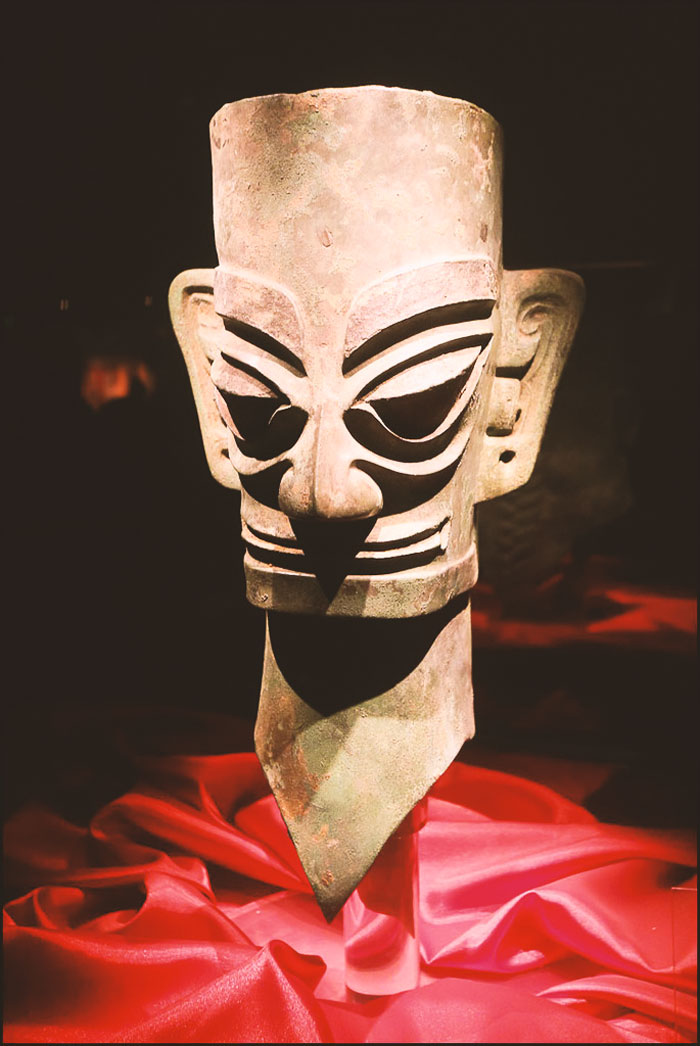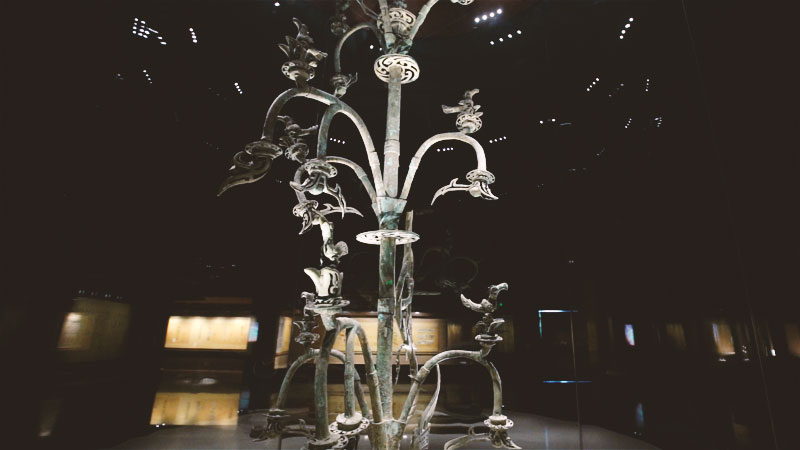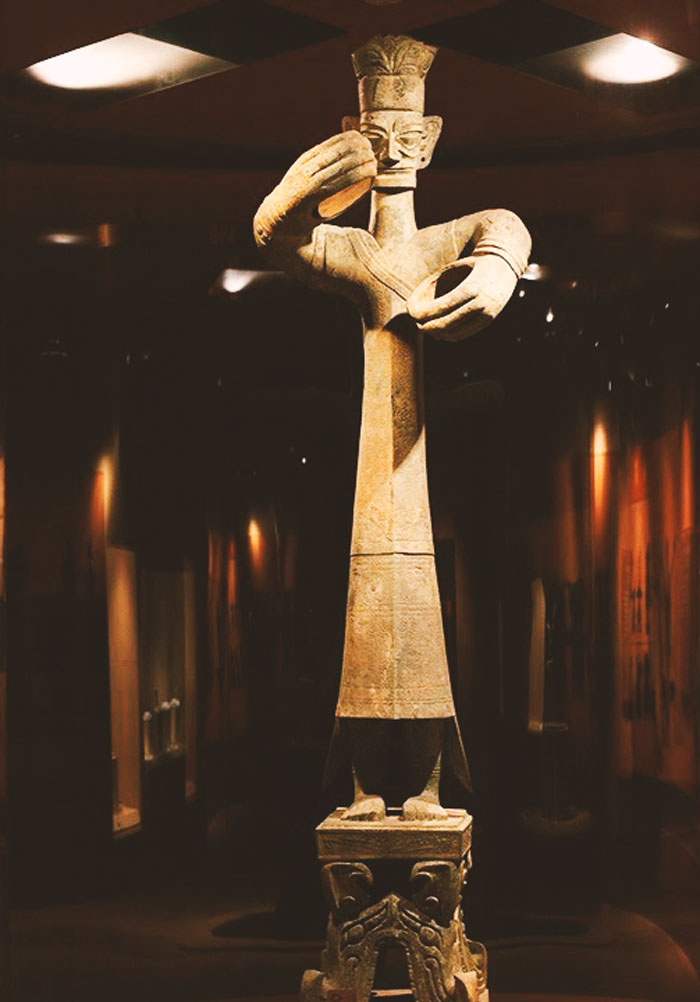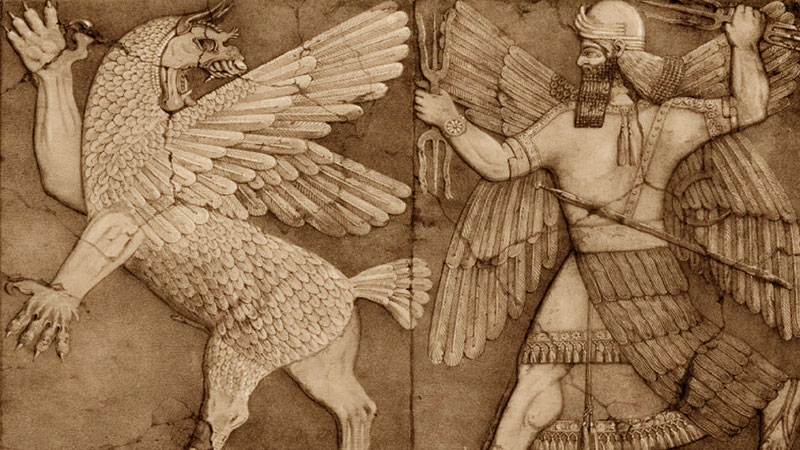
In 1929, local farmer Yan Daocheng found a jade well while scouring the site, but at that time no one thought this would be the beginning of a great enigma for archaeologists and researchers around the world.
Due to the social instabilities of the time, archaeologists could not carry out many excavations and after separating a few objects, the searches stagnated. Just in the early 1950s, archaeologists resumed their work in unveiling this precious historical relic called the “Sanxingdui Civilization”, the oldest known in China’s history.
The Sanxingdui culture developed and reached its peak more than 3,200 years ago. However, it left no historical records and disappeared suddenly, as mysteriously as it appeared, and experts are not sure if it belonged to a Chinese civilization.
Many theories cover the fall of the Sanxingdui civilization, which left behind fascinating works of art, different from anything ever found in any other period of Chinese history.
Archaeologists still wonder what the purpose of the found objects was and how such an ancient culture could be so advanced. Some speculate that extraterrestrials could be behind the mysterious relics after residents claimed to have constantly spotted UFOs in the area for more than 20 years.
The Sanxingdui Civilization

Sanxingdui means “Three Star Hills” and is named after it because it is located in a site where there are three great mountains in China’s Sichuan province, and since 1929, more than 10,000 relics, dating between 5,000 and 3,000 years ago, have been discovered in the ruins of the city.
The excavations yielded some of the most significant Chinese archaeological discoveries of the 20th century, which prove that Sanxingdui was a major political, economic and cultural center of antiquity. A true metropolis of its time, which boasted highly developed agricultural and mining systems and produced ceramics, tools and bronze pieces in an exquisite way, reaching the highest level of casting technology of the time.
After an in-depth study of Sanxingdui culture, experts have found that this civilization is very different from Chinese civilization, but possess some characteristics similar to the ancient Proto-Greek civilizations of the Aegean region and a link with ancient India and the Mesoamerican Mayan civilization.

The Sanxingdui civilization also produced masks and golden scepters that seem familiar to those found in Ancient Egypt, and their existence would imply that at least 4,000 years ago the ancient inhabitants of the region may have had cultural communications with other civilizations.
However, all this is theoretical speculation, as no text has been found so far and there is also no mention of this ancestral culture in the historical records of other civilizations.
Sanxingdui’s discoveries are exciting but enigmatic, as this kind of artistic style was completely unknown in chinese art history.
The Artifacts of Sanxingdui

The first impression we have when we see these strange masks on display in the large rooms of the Sanxingdui Museum in Sichuan Province is, “Are they Aliens?”.
These impressive jade, bronze and gold masks with angular humanoide features, including exaggerated triangle-shaped eyes, bulging noses and huge pointed ears, do not reflect the appearance of Asians and it is believed that they can portray ancient gods worshipped by the Sanxingdui culture.
Among the incredible discoveries made in Sanxingdui is the huge bronze “Celestial Tree”, which is undoubtedly one of the most colossal and enigmatic. Despite the impressive 3.96 meters high, experts believe that the original tree could be even taller as the canopy is missing.

Composed of a pedestal, a trunk and part of a dragon, the bronze tree is the oldest, tallest and largest of its kind ever found in the world. Its trunk has three levels, from which three branches arise, each with three fruits. Nine of these fruits point up, each with a bird standing. Experts believe it reflects the ancient people’s worship of a solar deity.
Among the bronze statues, one in particular impresses with its 2.62 meters tall, beautifully dressed and decorated, this tall and elongated figure stands barefoot on top of an elephant-shaped pedestal. Weighing 180 kg, it is the largest and oldest of its kind that has been found so far.
His identity is unknown, but two versions are speculated. Some experts believe he was a wizard or shaman, while others think it was the legendary Cancong, the first King of Shu, who was the name of Sichuan in ancient times, but there are only a few references about the Kingdom of Shu in the early historical records of China until the 4th century BC.

According to Dr. Chen Fang Mei, a bronze expert from the ancient Chinese dynasties, to produce a 180 kg statue, it is necessary to melt about 10 tons of mineral. This leads to the conclusion that the ancient Sanxingdui civilization knew very well the techniques of temperature control, ventilation and fusion, otherwise it would have been impossible to achieve such a level and quality standard.
So far, less than half of the 12 square kilometers of sanxingdui ruins have been excavated, and Chen Xiandan, curator of the Sichuan Provincial Museum, says, “It is quite likely that even more exciting archaeological discoveries will be made in the coming years.”

















